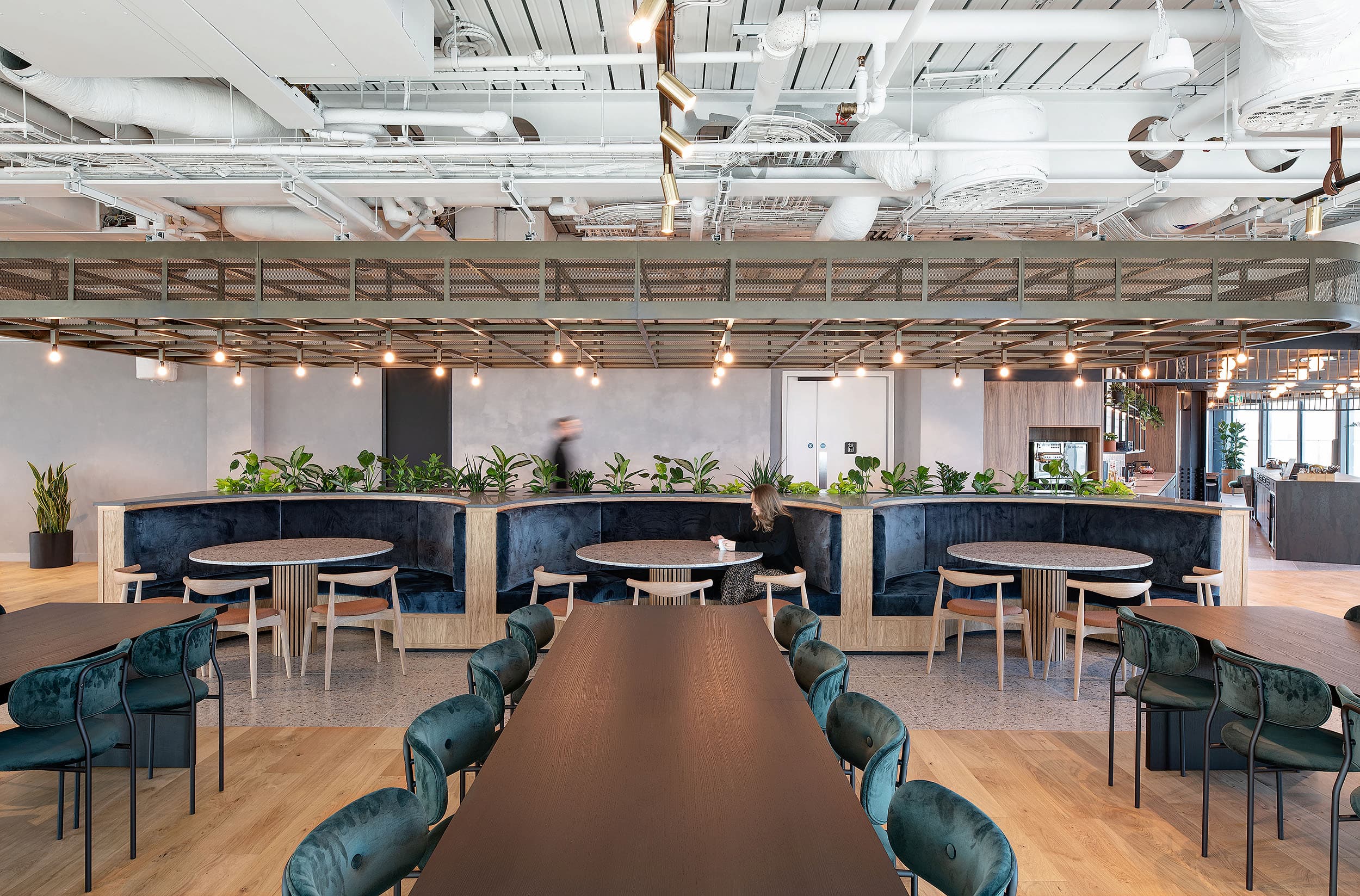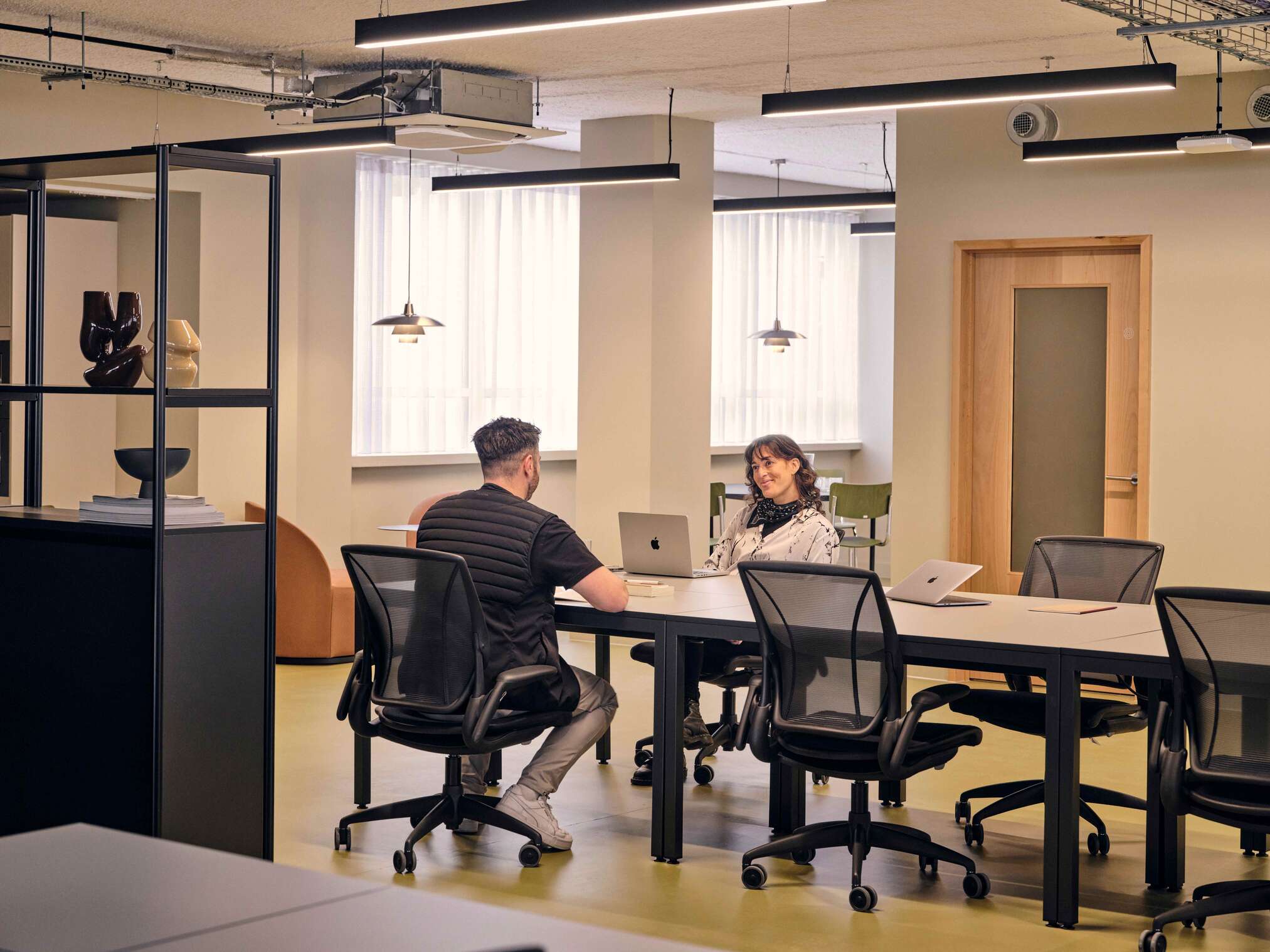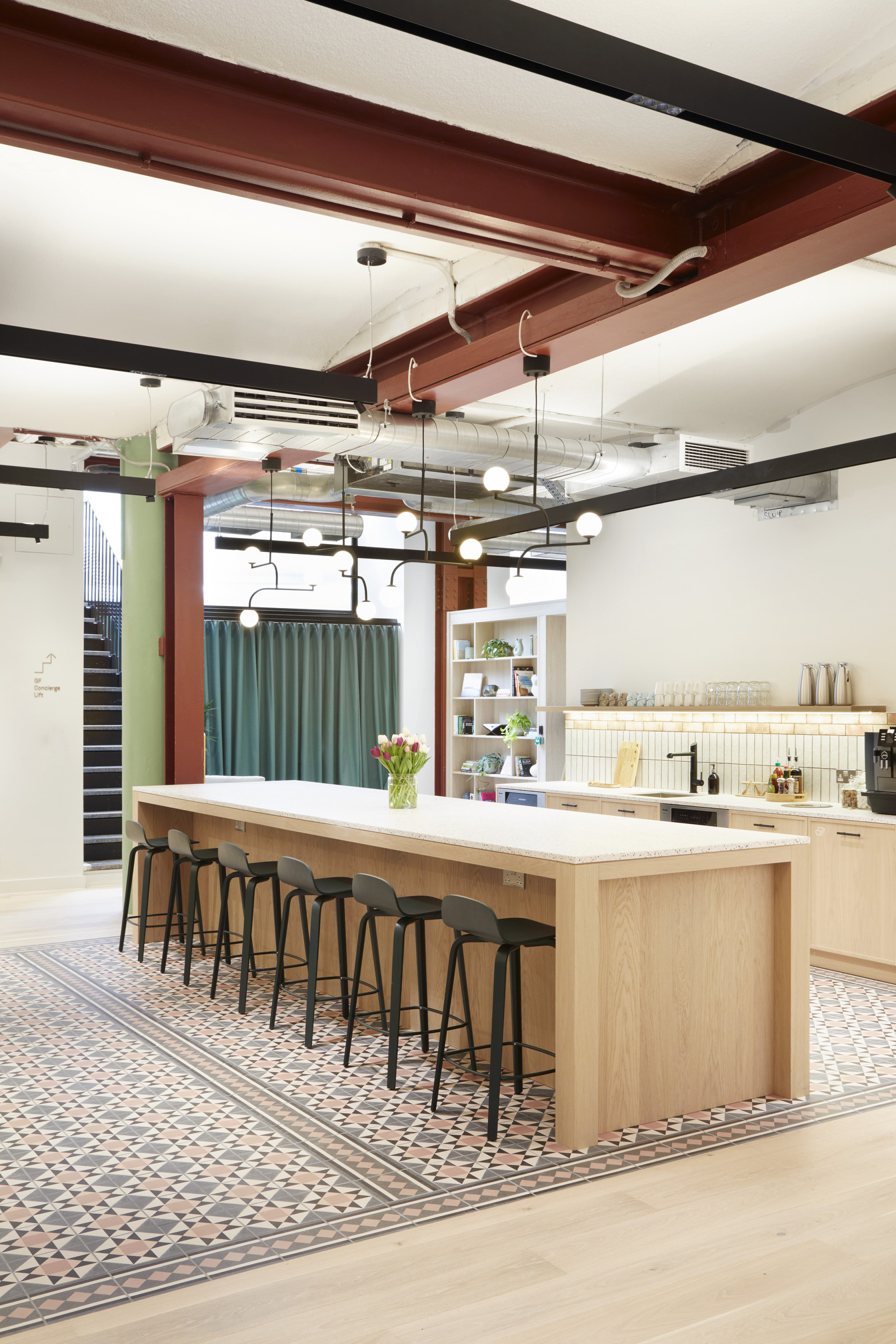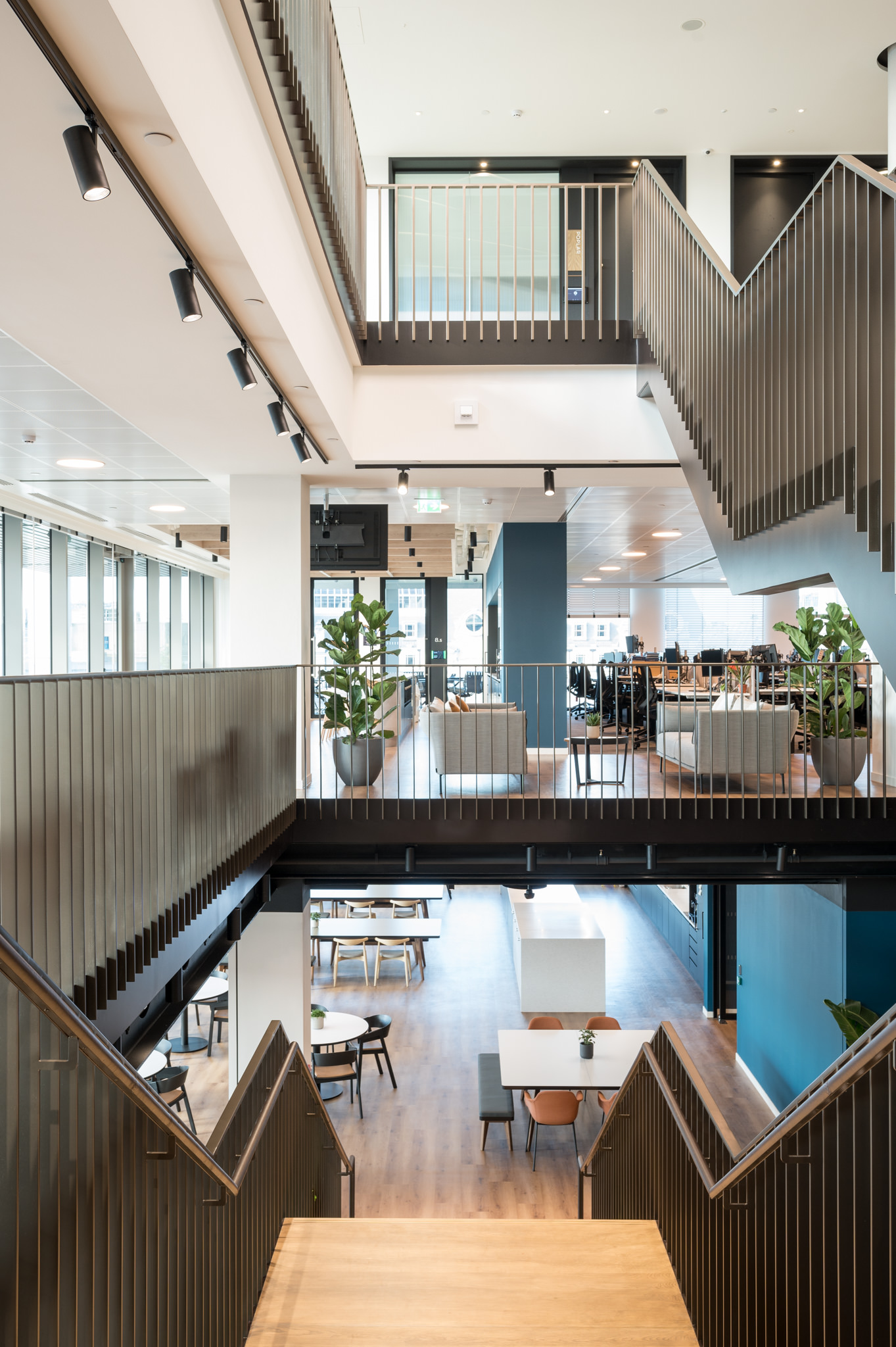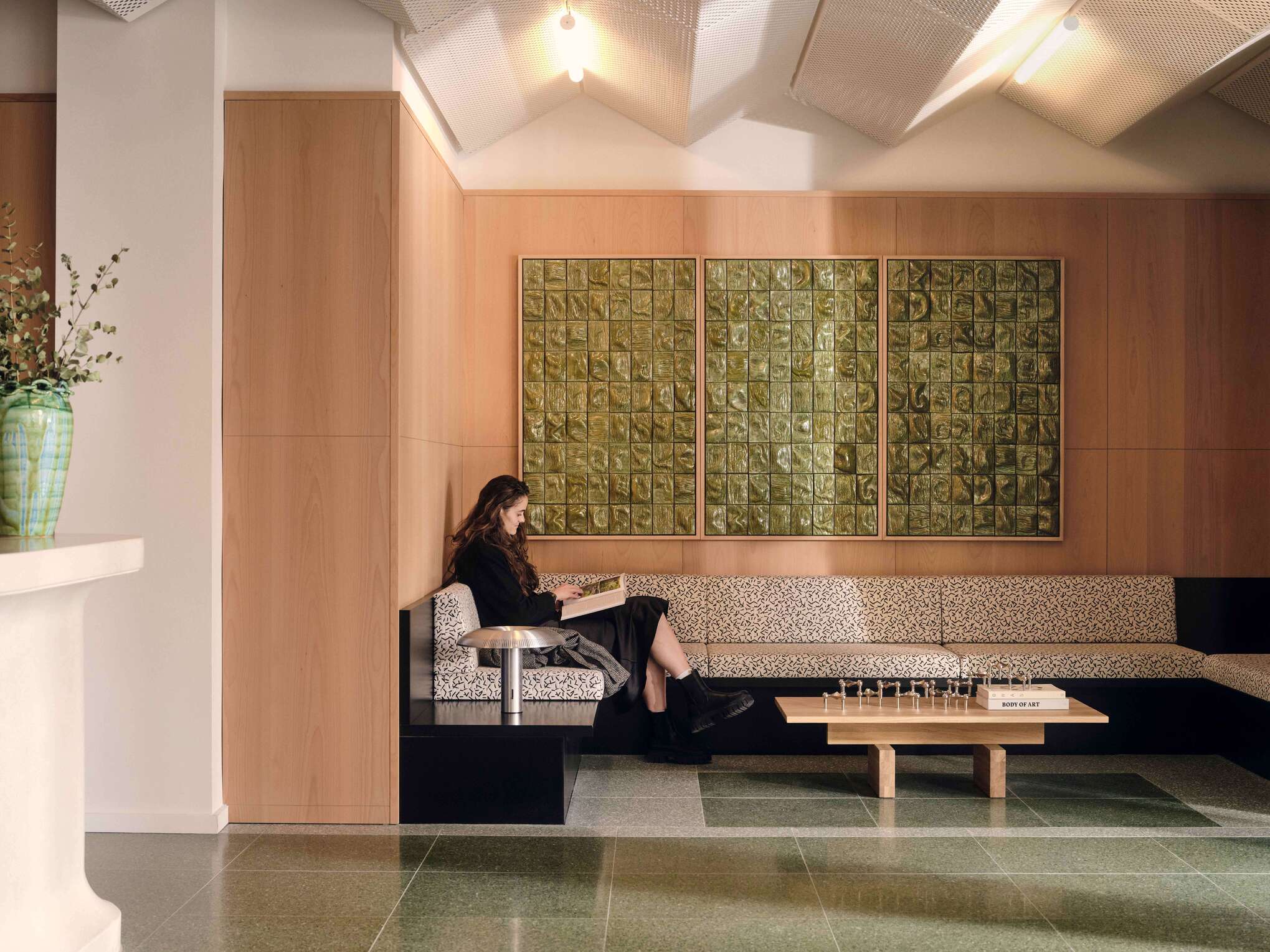AI in CRE is Redesigning the Office Market
The rise of AI in CRE is no longer a distant concept, it’s rapidly reshaping how corporate real estate is designed, valued, and experienced. Where the conversation once revolved around marginal efficiency gains, today it’s about buildings that think, learn, and respond.
According to JLL, 90% of companies plan to integrate AI into their CRE strategies within the next five years. That makes one thing clear: the shift is already underway. However, the bigger story lies in how AI will redefine the design and human experience of the workplace.
We are moving from static workplaces to living ecosystems, shaped by intelligent systems that anticipate needs, adapt layouts, and even reimagine culture. For landlords and occupiers, the question is no longer whether to adopt AI, but how fast you can embed it without losing the human soul of the workplace.
AI as a Co-Designer
Office design has relied on a blend of human intuition, experience, and limited datasets such as headcount or departmental adjacency for decades. AI in CRE changes the rules. Generative design platforms can produce thousands of floorplan variations in seconds, optimising for daylight exposure, acoustics, energy flow, and collaboration potential.
WorkTech Academy’s How AI is Reimagining the Corporate Real Estate Market has pointed to this shift at a strategic level. For example, algorithms can analyse behavioural data from sensors to recommend layouts that reduce meeting congestion or highlight unused space. This empowers us to create spaces grounded in how people actually work. It doesn’t replace creativity: it sharpens it with data-backed precision.
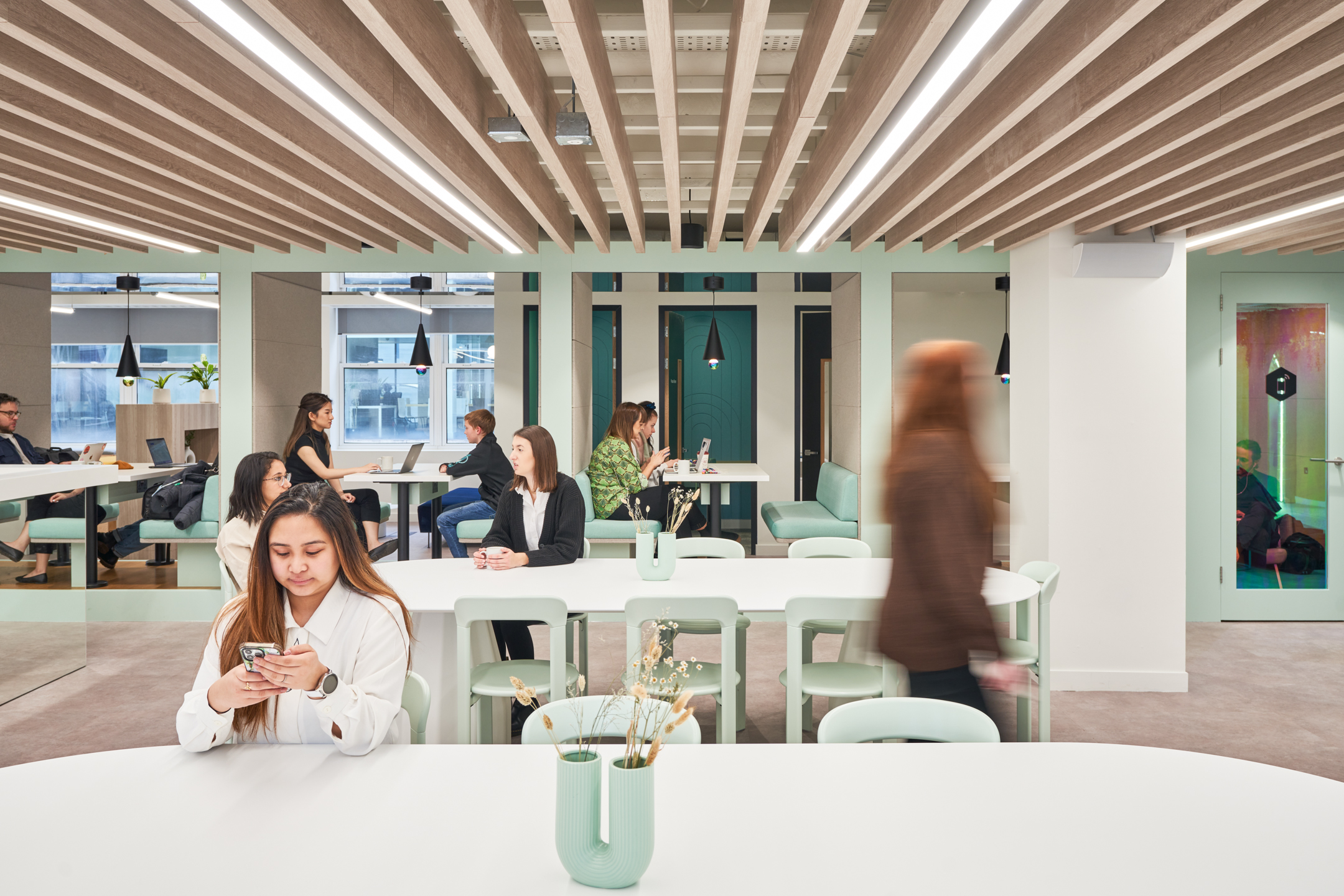
Dynamic Buildings, Not Static Assets
The traditional office is a static asset: designed once, occupied for years, refurbished occasionally. AI transforms that static model.
With AI in CRE, office layouts can flex daily: reallocating desks, collaboration areas, or breakout zones based on occupancy. Energy systems adjust pre-emptively to demand, lowering cost and carbon. Predictive analytics identify repair needs before downtime occurs.
This is the emergence of what we might call “responsive architecture”, buildings that learn and evolve continuously. As JLL points out in its guide AI in CRE: From Sci-Fi to Reality, the shift from theoretical to practical application is already happening. For corporate real estate leaders, asset value is increasingly tied to intelligence and adaptability.
Personalisation at Scale
AI in CRE’s most disruptive promise lies in the employee experience. Employees can already control temperature or lighting via apps, but AI goes further: tailoring workstations, acoustic levels, and even wellness interventions to individual needs.
AI can minimise sensory distractions for neurodiverse talent. For accessibility, it enables adaptive wayfinding or mobility support in real time. At scale, these adjustments create workplaces that respect difference and help people perform at their best.
What once felt impossible, truly bespoke environments for hundreds or thousands of employees, is now achievable through AI. And that scale of personalisation doesn’t just improve experience. It builds the conditions for greater satisfaction, loyalty, and performance, setting the stage for long-term value creation.

Rethinking Value in Real Estate
For investors and landlords, AI is an economic revolution. Buildings equipped with AI in CRE generate measurable returns: reduced insurance risk through predictive modelling, higher tenant satisfaction through personalised experiences, and lower operational costs from energy optimisation.
Research underscores this shift. HP’s Work Relationship Index 2024 shows that 68% of knowledge workers and 76% of business leaders want workplaces personalised to their needs. The report also found that 87% of employees would be willing to accept a pay cut for greater happiness at work, a clear signal of how much value people place on their environment. For landlords and occupiers, this matters commercially: happier, more engaged employees drive retention and productivity, which in turn sustains demand for spaces that deliver it. With AI making large-scale personalisation possible, it becomes a strategy for long-term resilience in the corporate real estate market.
The Human Question
AI’s potential in CRE is immense but cannot substitute culture, creativity, or community. The challenge is balance: harnessing algorithms to reduce friction while keeping offices human at their core, designing data-rich environments that still feel warm, inclusive, and human.
AI in CRE is already shifting from theory to reality. The leaders in this space won’t be those who chase novelty, but those who see AI as a strategic partner. Intelligent workplaces that adapt to people, reduce risk, and sustain value are not futuristic concepts, they are becoming the baseline for market resilience.
Tomorrow’s most successful offices will be remembered for more than their architecture. They will stand out for the intelligence woven into their fabric, spaces continuously redesigned by algorithms working with human ambition. For occupiers, that means attracting and retaining talent. For landlords, it means safeguarding long-term asset value. For the industry, it signals a future where resilience is built into the very DNA of corporate real estate.

